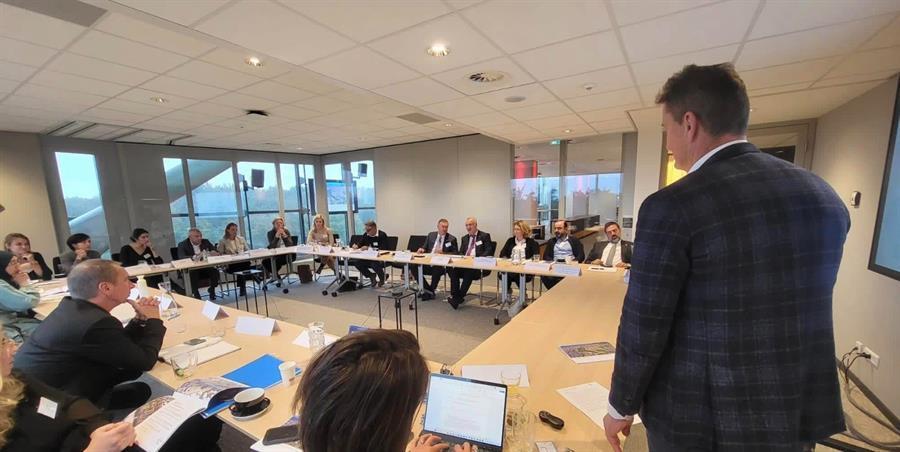Hatay’s revitalization project to conclude in March
HATAY

An international team of experts from various disciplines will complete a project on the revitalization of the quake-hit southern province of Hatay, especially its city center, in March, with the group taking into account not only the physical aspects but also the "spirit of the city and the emotions of the earthquake survivors.”
Following the disaster claiming the lives of more than 50,000 people, the preservation of Hatay's identity as a city of civilizations demands meticulous attention at every stage. Recognizing this sensitivity, the Türkiye Design Council volunteered to develop the city's master plan, urban design and architectural projects with a multidisciplinary endeavor.
Unveiling their initial efforts in September, the team on Oct. 23 provided insights into the progress they've made so far and outlined the key criteria for their project during a workshop held in the quake-stricken city.
In their presentation, the architects emphasized that the most crucial aspect is to ensure the preservation of Hatay's essence and to consider the emotional factors and experiences of the earthquake survivors.
Türkiye Design Council Chair Mehmet Kalyoncu underlined the competence of the team, describing its members as the "best minds" in their field worldwide.
In addition to the members, experts from London, Madrid, New York and Turkish professionals who have excelled in urban planning abroad also wish to contribute, Kalyoncu said.
Noting that the Environment, Urbanization and Climate Change Ministry has undertaken the project's construction, asserting that the city will expand from the center to the outskirts, and the initial structures play a critical role in guiding subsequent development.
Ömer Selçuk Baz, one of the architects involved in the project, highlighted that a central focus is designing to facilitate neighborhood relationships and preserve the local culture.
Within the scope of the project, areas where people lived before the earthquake will be rearranged without relocation. New housing in these areas will be designed to ensure a comfortable living environment, and newly built houses will be returned exclusively to their previous occupants. The project also aims to rejuvenate the old city center and create new commercial zones while simultaneously generating employment opportunities.
The team also plans to accentuate the city's silhouette by highlighting its mosques, churches and synagogues, thus preserving its identity.
Furthermore, some earthquake survivors who attended the workshop voiced their expectations for faster and more professional solutions concerning the delivery times for their new living spaces and homes.
















